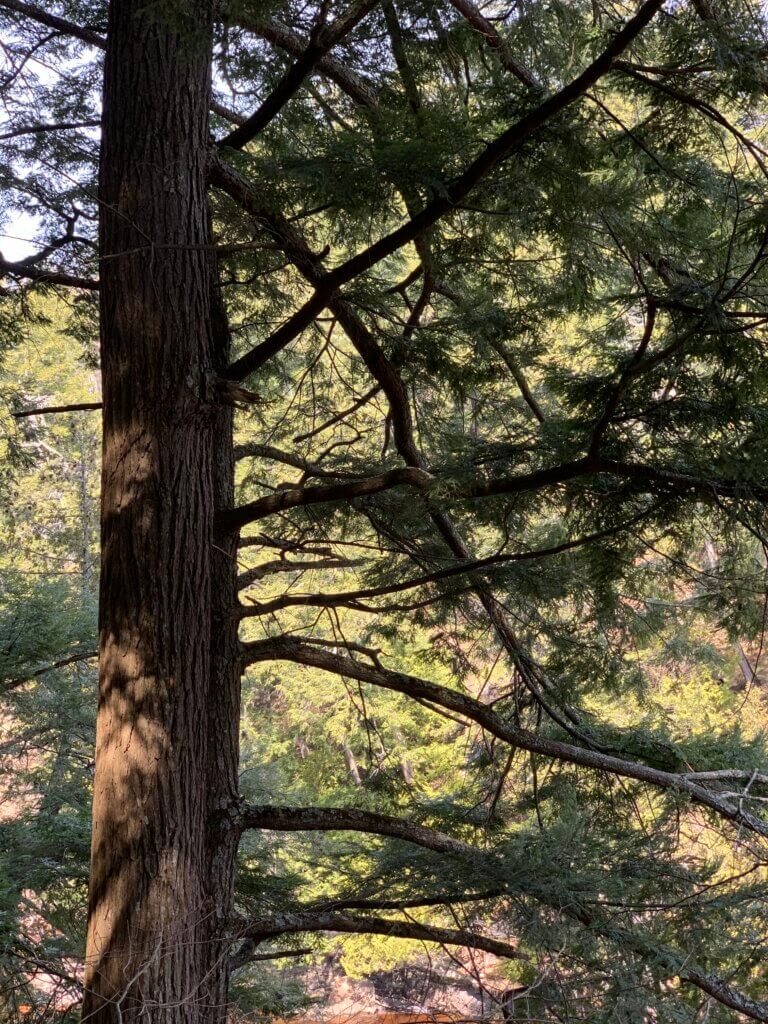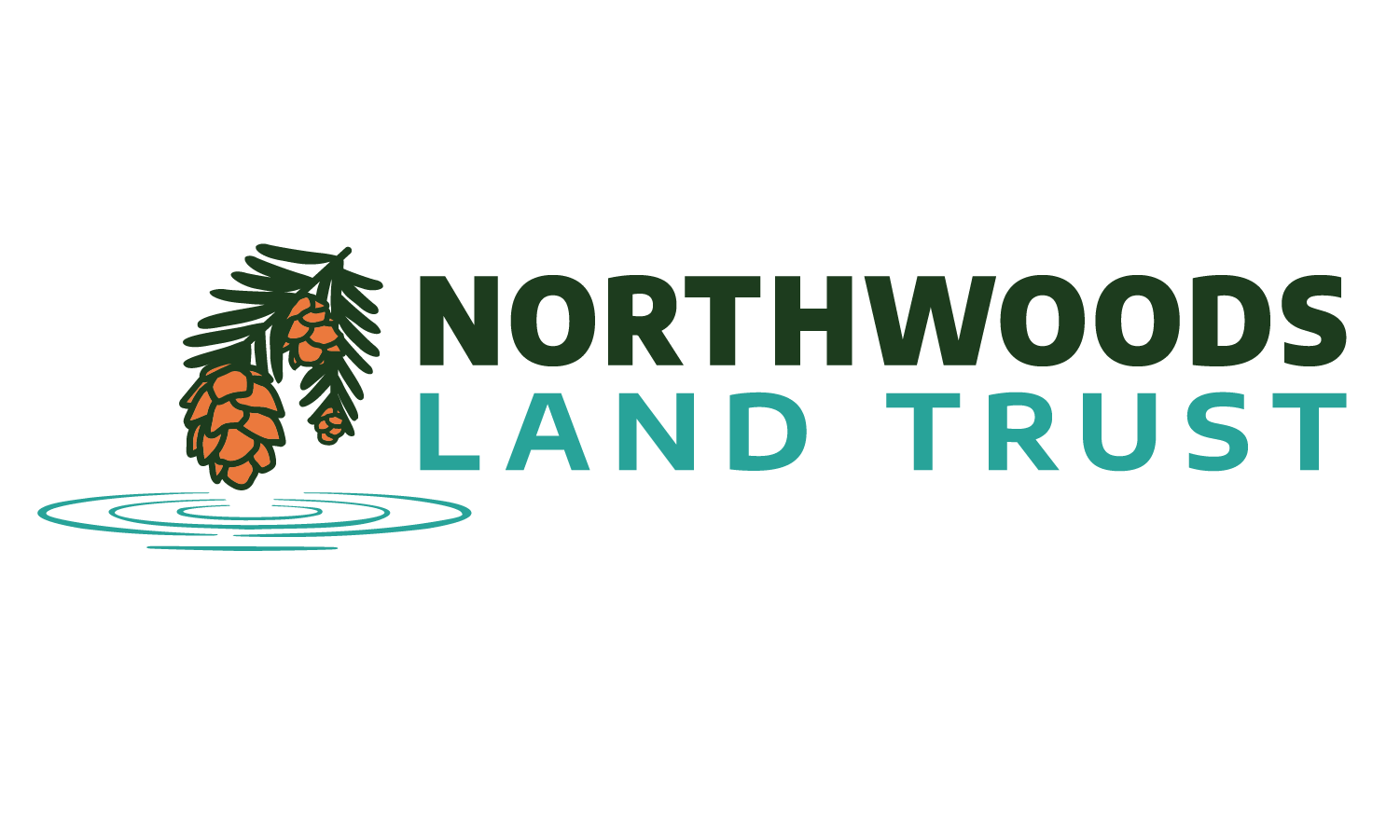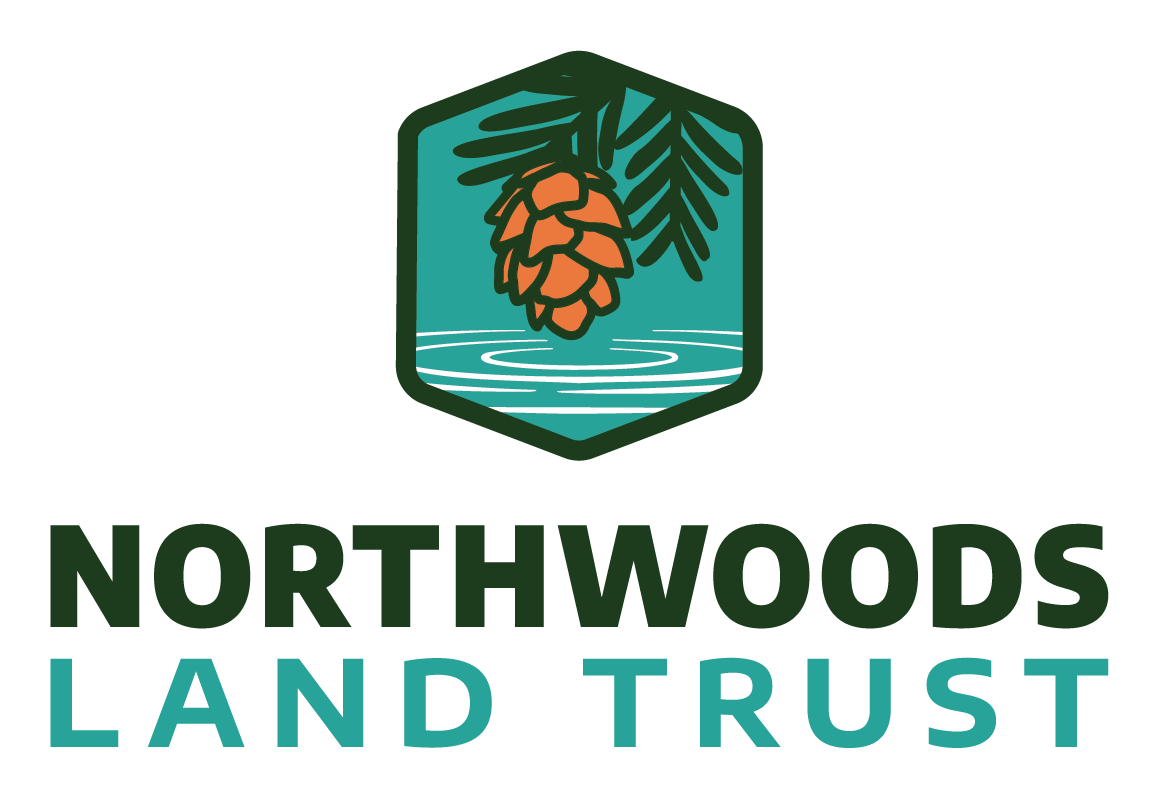The Story of Old-Growth Eastern Hemlock at Beaver Creek Hemlocks Conservation Area
By Ron Eckstein, NWLT Board Member

Eastern hemlock (Tsuga canadensis), a long-lived conifer, thrives in the soils at the Beaver Creek Hemlocks Conservation Area. There’s more to the story than just having the optimal soil, light and moisture conditions and it goes all the way back to the Ice Age.
The northwoods was covered with ice 25,000 years ago. At that time, the eastern hemlock forests were confined to the protected, ice-free coves in the southern Appalachian Mountains. Researchers studied pollen cores from wetlands and learned that, as the climate warmed, hemlock began a slow migration north along the Appalachians into Pennsylvania and New York, then across southern Canada and Michigan’s Upper Peninsula, and arrived in Wisconsin about 3,000 years ago.
For the last 3,000 years, hemlock was one of the dominant trees (~40%) across much of north central and northeastern Wisconsin. Hemlock seedlings and saplings are extremely shade tolerant and can live hundreds of years under dense shade. When nearby tall trees are toppled by a storm or old age, the hemlock saplings reach for the sun and can live another 300 years as large old-growth trees.
When Europeans arrived in northern Wisconsin, they saw the forest as a resource to be exploited. In the lifetime of a lumberjack, between 1880 and 1940, the old-growth hemlock, white pine, yellow birch and sugar maple forests were cut. Vast forest fires burned millions of acres. The fires eliminated most of the hemlock seedlings and saplings. Attempts to convert the forest to agriculture failed, much of the land went tax delinquent, and by 1950 fire control and forest conservation efforts began the slow process of reforestation.
Today hemlock is an uncommon and rare tree (outside of the Menominee Indian Reservation). It occurs on less than 2% of its former range. Attempts to replant and regenerate hemlock have failed. The hemlock seedlings and samplings that do establish are oftentimes killed by the high numbers of white-tailed deer that browse on low-growth vegetation throughout the long winters.
There are few places where stands of hemlock with old-growth characteristics still occur. One example is the Beaver Creek Hemlocks Conservation Area. The Northwoods Land Trust (NWLT) purchased the property in 2021 from a small state agency called the Board of Commissioners of Public Lands (BCPL). In the 1800s, the federal government granted Wisconsin millions of acres of land to be held by BCPL. Much of the land was sold and the proceeds created the School Trust Fund to support public education, even today.
BCPL still owns widely scattered parcels. Some have been sold to other conservation agencies and organizations such as NWLT because they are not compatible with BCPL’s current forest management directive. Many of these sold parcels lacked suitable access for logging, and as a result, they remain as great examples of intact natural forest communities with old-growth forest characteristics.
In recent years, NWLT has worked with BCPL to identify parcels of interest, many containing remnant old-growth forests. The Beaver Creek Hemlocks and Sack Lake Hemlocks in Iron County are two of NWLT’s acquisitions that were original BCPL lands. They conserve a rare and important feature of northwoods biodiversity, our old-growth hemlock forests.
To celebrate the protection of old-growth forests, Beaver Creek Hemlocks was inducted into the national Old-Growth Forest Network (OGFN) on September 7, 2023. By joining the national registry (the 7th in Wisconsin to do so), this special property will connect more people of all generations to the beauty of and history behind old-growth forests.
These apex ecosystems are extremely valuable as they provide a diversified forest structure capable of supporting a greater variety of plants and animals compared to younger forests. The registry not only builds a network of the nation’s oldest forests, but also an alliance of people who care about them.
Our Old-Growth Forest Initiative shares educational resources that are easy-to-read and covers more topics related to the protection of old-growth forests in northern Wisconsin.
Our Climate Conservation Solutions Initiative talks about the role of forests in northern Wisconsin and how they mitigate extreme climate impacts.


